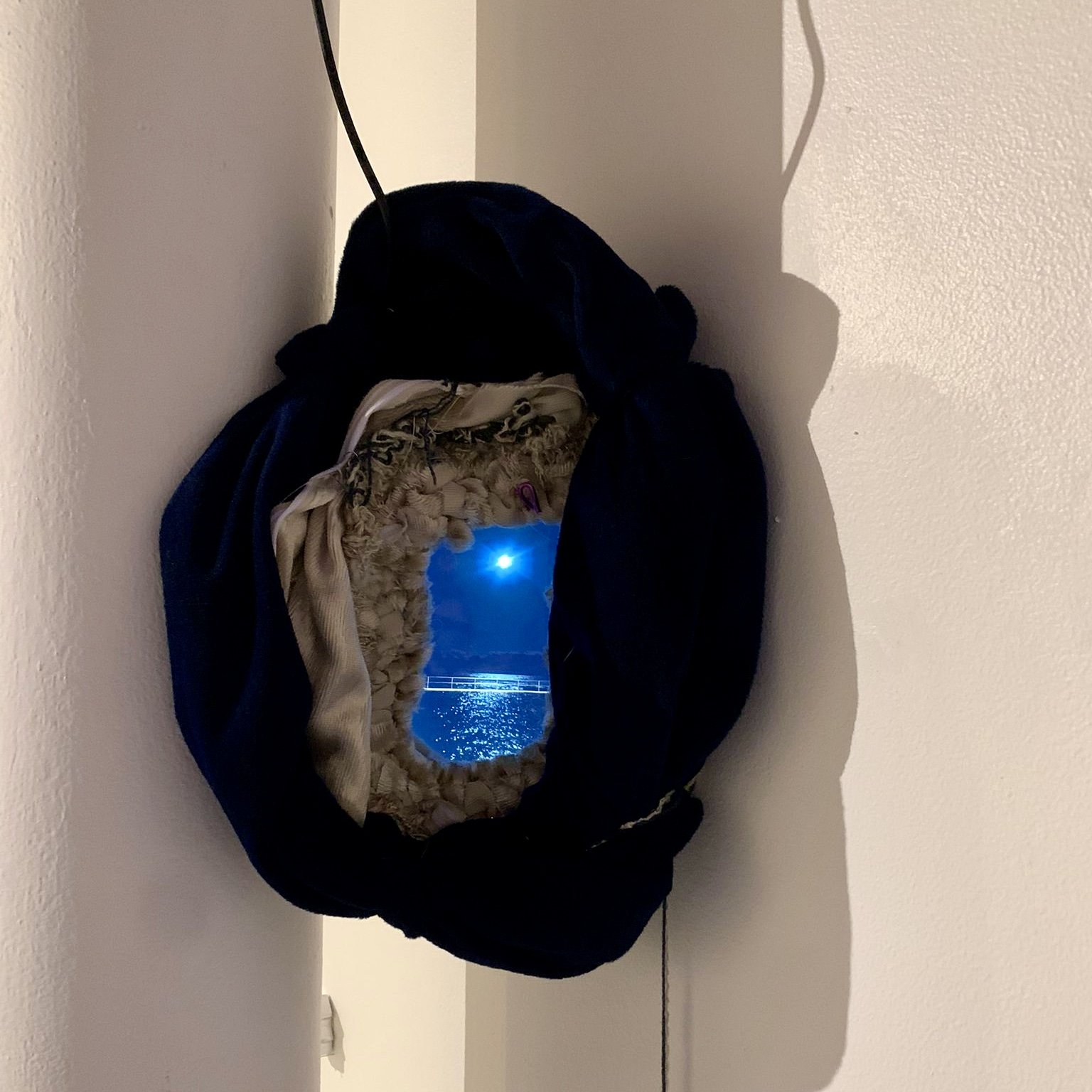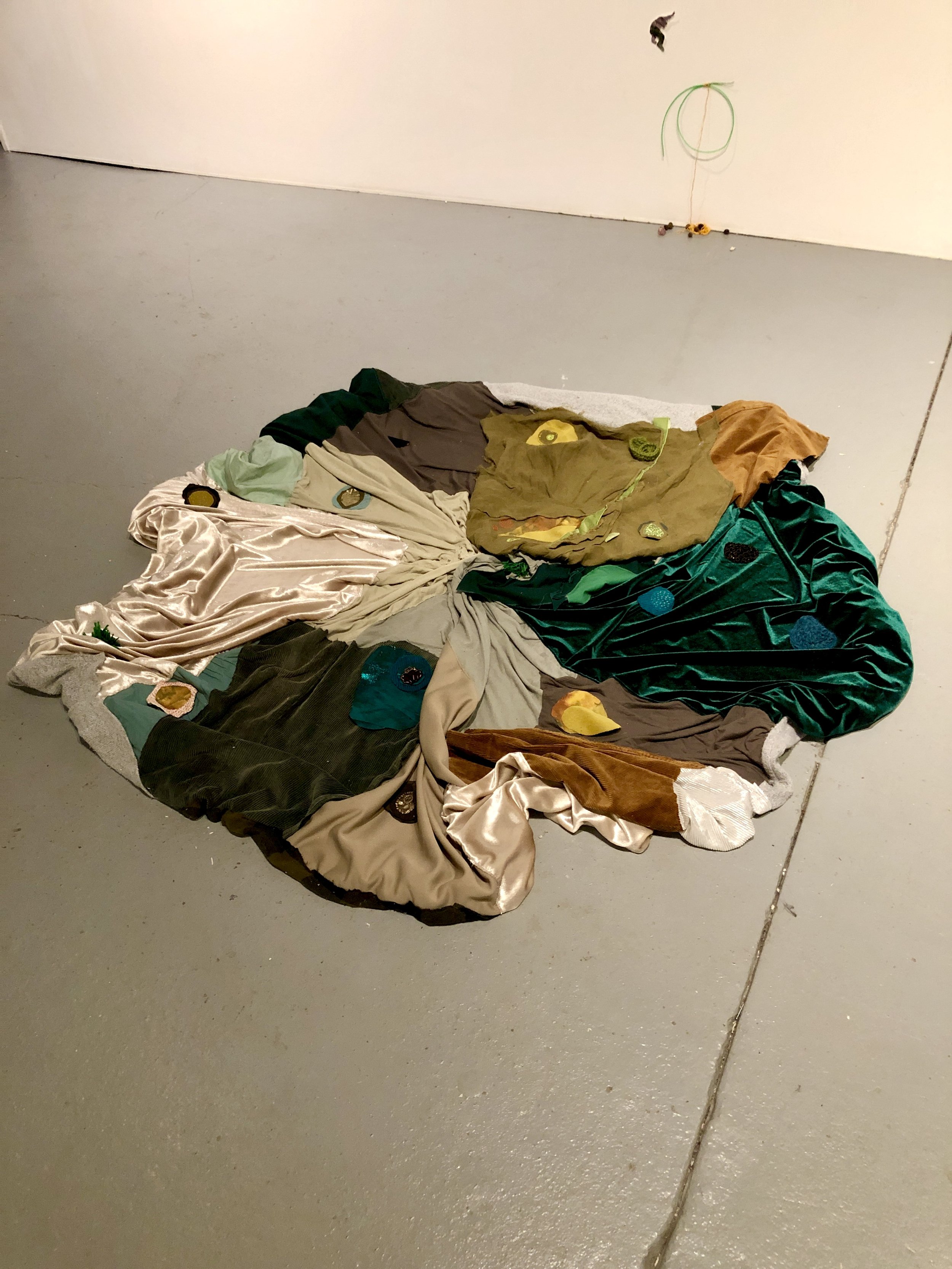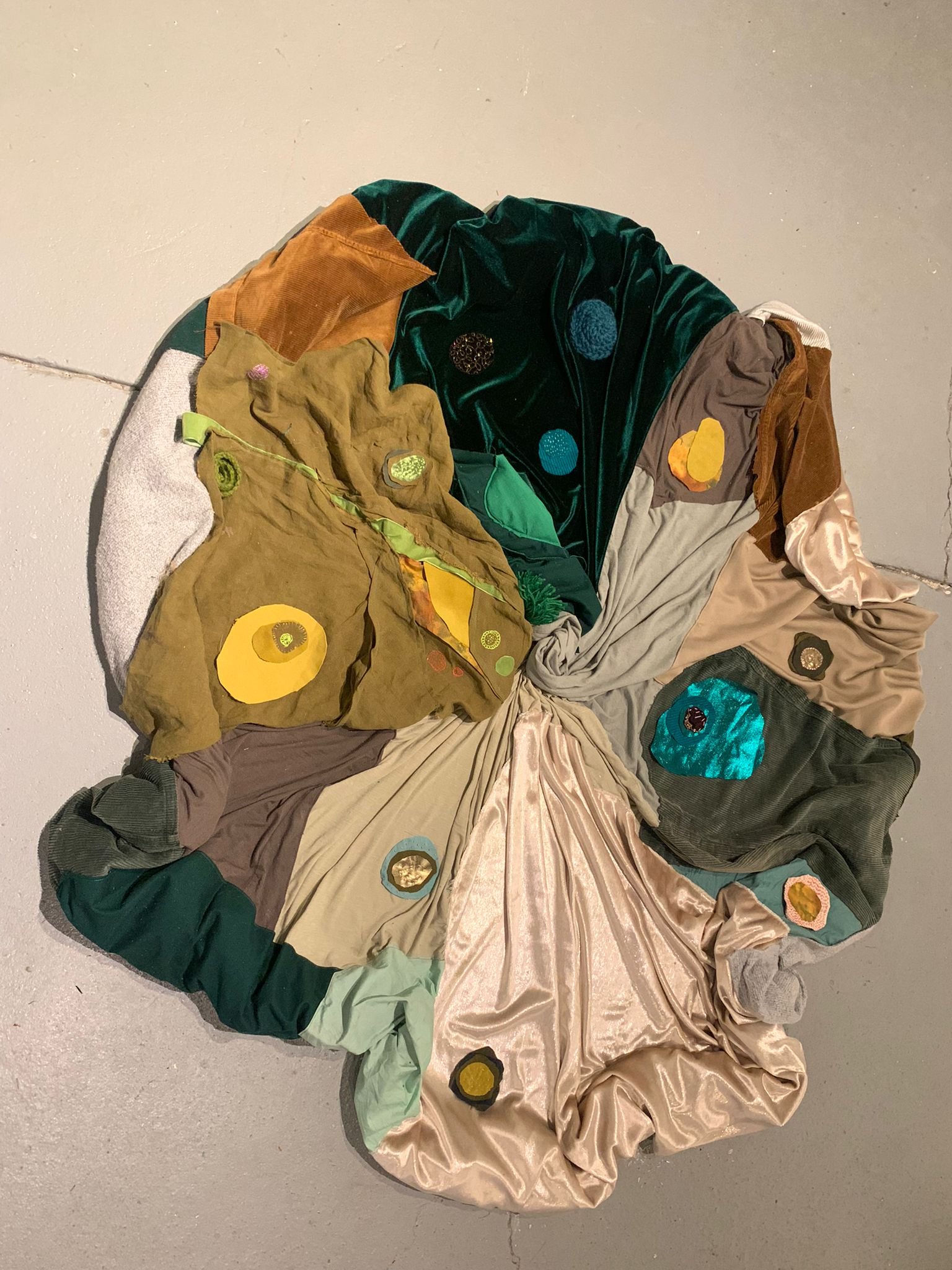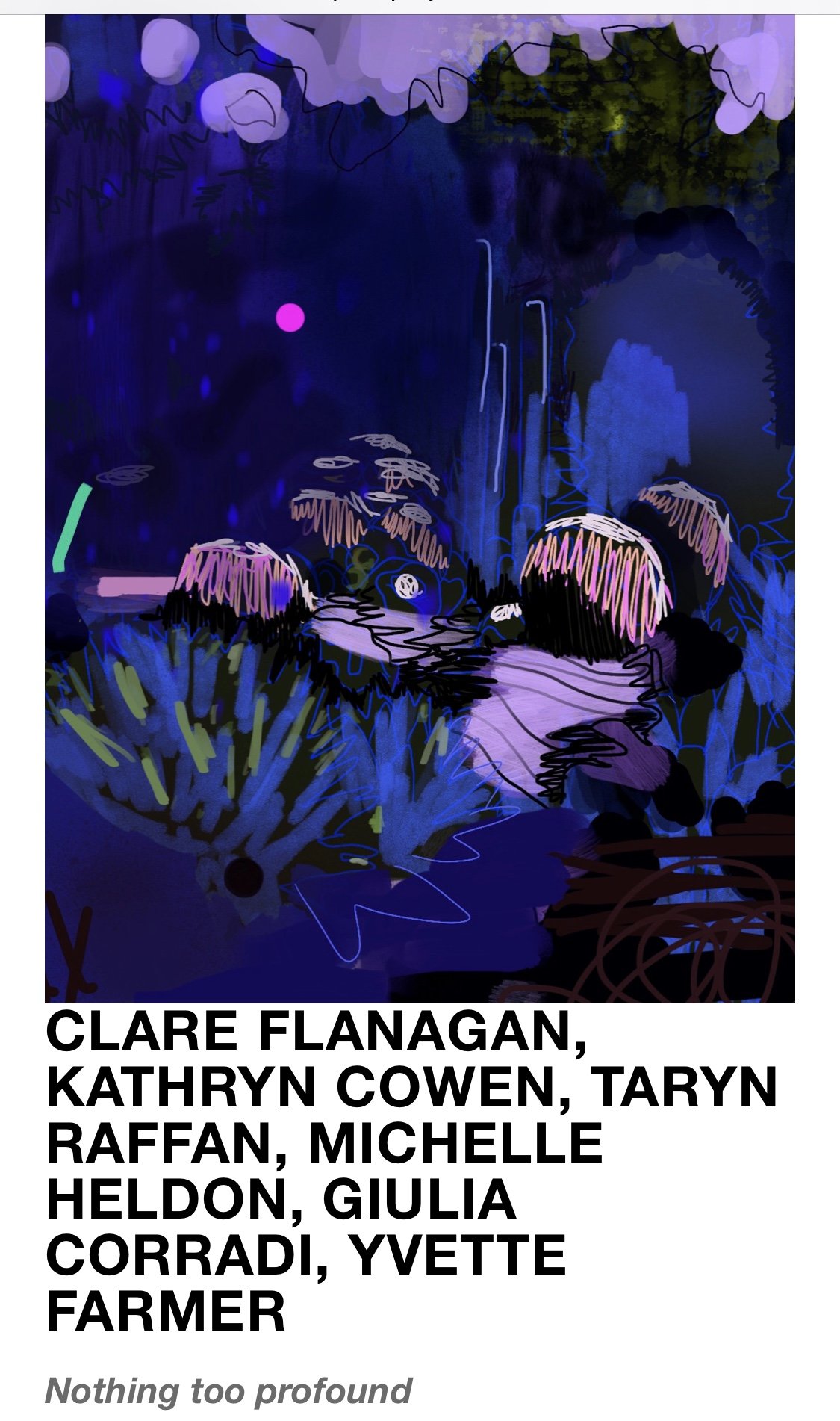Nothing too Profound, AIRspace Projects, 2022
Nothing too profound
Clare Flanagan, Kathryn Cowen, Taryn Raffan, Michelle Heldon, Giulia Corradi, Yvette Farmer
Gallery 1 + 2
AIRspace Projects
10 Junction St, Marrickville
5 - 21 August 2022
An interweaving of acts of making by 6 women over the past 2 years. This exhibition captures wonderings, gentle exchange and incidental moments of the coming together of these artists and their worlds.
Nothing too Profound, Gallery 1, AIRspace Projects, Marrickville, 2022, installation view
It starts with a mark, a line drawn on a scrap of paper, or an object picked up during a walk. A fragment of text dotted down on an old receipt, or a memory suddenly recalled on a warm afternoon. The incidental acts that could be the beginning of an artwork. The small thoughts that have the potential to grow into bigger ideas. How often do we dismiss humble gestures due to a lack of time or space? What if we gave them the encouragement and space to develop into something more?
Nothing too profound is an exhibition that brings together new works created by six artists: Giulia Corradi, Kathryn Cowen, Yvette Farmer, Clare Flanagan, Michelle Heldon and Taryn Raffan, that consider ideas of care, exchange, process and time.
Over the last two years, between work, family commitments, other projects and Covid restrictions, the six artists have met regularly to share and discuss ideas. Beginning as a series of conversations, initially digitally and later in person, these meetings provided a space in which the artists could exchange objects, knowledge and skills. Over time this informal gathering of artists has transformed into a cooperative in which experimentation and risk are encouraged.
In Nothing too profound, artworks by the individual artists are presented in conversation with one another. Throughout the two gallery spaces, artworks are presented overlapping or woven around each other reflecting shared explorations and materials.
Traversing the walls, Yvette Farmer’s texts could read as reveries or daydreams, giving voice to humble, often unseen moments of the everyday. Starting life as scribbles on scrap pieces of paper, Farmer’s observations are often personal musing, poems meant for one. Frequently drawing inspiration from the natural world, Farmer notes that ‘the flutter of a fern, creaking bark of gumtrees, or the movement of an insect’s wing’ could all find their way into one of her texts.
Clare Flanagan also explores the beauty and joy found in the small, forgotten and discarded objects of daily life in A day in the life: An anthropological study of toddler and artist. Flanagan’s colourful, tactile installations comprise of various objects her ‘bower bird of a child’ gifts her during their daily walks. In elevating discarded items and materials that have been rescued by her son into artworks, Flanagan considers concepts of value and beauty and what we can learn from reconnecting with our childlike curiosity.
The magic and wonder of a child’s interaction with the world is also explored in Michelle Heldon’s works. Heart constellations is a series of intuitive drawings, created by the artist with her eyes closed, presented alongside the ‘first marks’ made by her daughters. Heldon’s process-driven works are often informed by sensory engagement, such as touch, sound, texture, and concepts of learning and unlearning. Heldon’s Kindling – moss mat - to spark joy is a collaborative textile work created by the artist and her mother and sister using reclaimed fabrics. The process of creating the work allowed the women the opportunity to come together to share skills, stories and support outside of their roles as carers. Over the course of the exhibition the work will transform and expand through additions created in a series of workshops with adults and children.
Inter-generational learning is a key theme in a number of works in the exhibition. In Gnocchi Giulia Corradi explores her relationship to her late mother and her young daughter through the process of making gnocchi. Corradi considers how everyday acts of comfort and nostalgia, such as cooking family recipes, enable us to connect and grieve. The artist’s clay gnocchi pieces are simultaneously objects of remembrance and joy – objects designed for play that derive from activities of nurture and care.
Kathryn Cowen’s digital drawing, Hypnopompia, references the sensorial abstraction that occurs when we emerge from sleep. In these moments, ‘fleeting fragments of vision and thought’ coalesce and collapse into one another. Cowen’s digital drawings are experimental and process-driven, a form of ‘thinking through making’. These drawings are deconstructed and animated in the accompanying video projection, Hypnagogia, which references the liminal state. Reflecting the transition of consciousness to sleep, imagery appears fragmentary and incomplete, abstracted and dreamlike. Also congregating throughout the gallery space are Cowen’s Biomorphs 2-5, strange, glowing organisms that draw on the ‘oddities of the virtual dream world'.
Taryn Raffan’s sculptures and works on paper are inspired by the Shintoism concept of kami, an elemental or natural force found within significant objects. Responding to the forms and materials found within nature the deeply personal works are meditations on care, grief and time. In these works, the artist reflects on how a reconnection with the natural world enables processes of healing and acceptance.
Megan Robson 2022

























